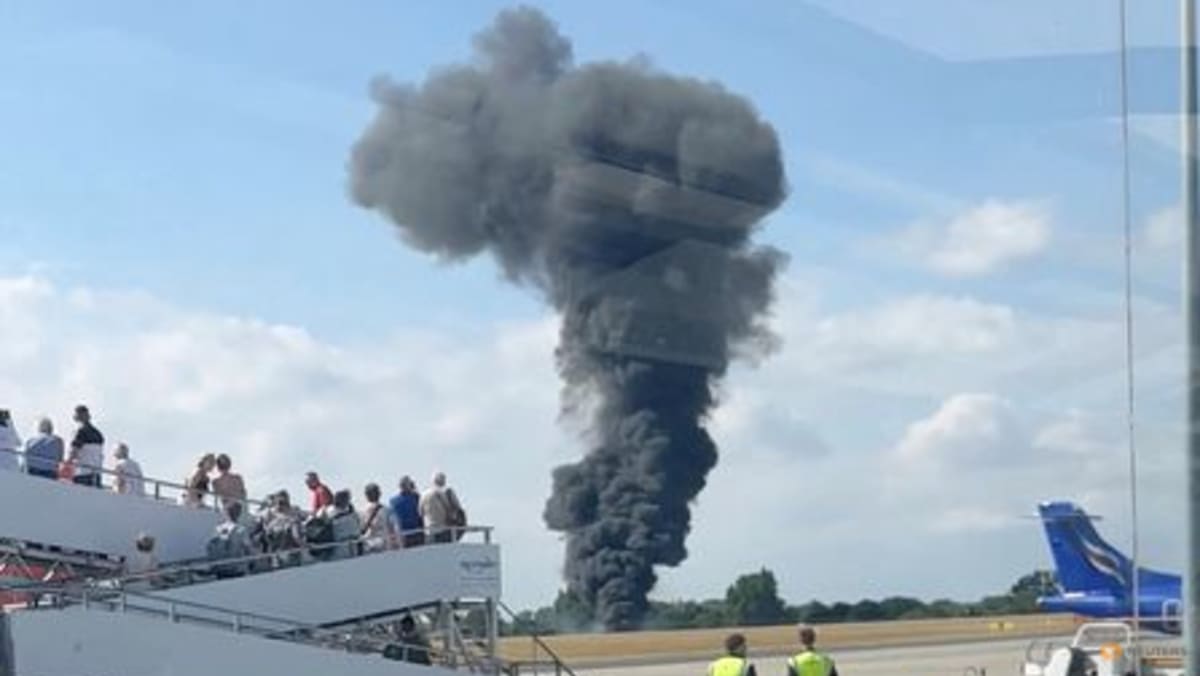A haunting incident unfolded at London Southend Airport when a small plane, identified as a Beechcraft B200 Super King Air, crashed shortly after takeoff, resulting in the tragic deaths of all four individuals on board. Among the deceased were a Dutch pilot, a co-pilot, and a 31-year-old nurse, each with vibrant lives tragically cut short. Eyewitnesses described the harrowing moments leading up to the crash, recounting the sight of a massive fireball and plumes of black smoke that erupted from the aircraft’s
Did You Know
The shortest war lasted 38 minutes.
?
AD
descent.
The plane, operating as a medical transport, went down in a shocking manner that left onlookers in disbelief and emergency services scrambling to respond. Reports indicate that the aircraft got into difficulty shortly after lift-off, raising serious questions about the factors that contributed to this catastrophic event. Authorities have initiated an investigation focusing on the incident's circumstances, aiming to uncover the details surrounding the tragedy and ensure accountability moving forward.
In the aftermath of the crash, London Southend Airport has been closed indefinitely, with all flights canceled as investigations continue. The incident has sent ripples of concern through the aviation community, highlighting issues of safety and emergency response protocols at regional airports. As families mourn their loved ones and the broader community reflects on this profound loss, the call for improved oversight and safety measures in aviation grows louder, reminding us of the fragility of life in the skies.
Q&A (Auto-generated by AI)
What caused the plane crash at Southend Airport?
The small plane crash at London Southend Airport occurred shortly after takeoff on July 13, 2025. Preliminary reports indicate that the aircraft, a Beechcraft B200, encountered difficulty shortly after leaving the ground, leading to its tragic crash. Eyewitnesses described seeing a 'big fireball' upon impact, suggesting a catastrophic failure during ascent. Investigators are focusing on 'human factors' as part of their inquiry into the crash.
What are the safety regulations for small planes?
Safety regulations for small planes, particularly in the UK, are governed by the Civil Aviation Authority (CAA). These regulations cover pilot training, aircraft maintenance, and operational procedures. Pilots must have appropriate licenses and undergo regular training, including emergency procedures. Additionally, aircraft must be maintained to specific standards, with regular inspections to ensure airworthiness. These regulations aim to minimize risks and enhance safety in aviation.
How do medical transport flights operate?
Medical transport flights are specialized air services designed to transport patients, organs, or medical equipment quickly. These flights typically use aircraft equipped with advanced medical systems to ensure patient care during transit. Operations are usually coordinated by hospitals or medical transport companies, which arrange for pilots trained in medical emergencies. Timeliness is crucial, as these flights often respond to urgent medical needs, making safety and efficiency paramount.
What investigations follow aviation accidents?
Following an aviation accident, investigations are conducted by relevant authorities, such as the Air Accidents Investigation Branch (AAIB) in the UK. Investigators examine the crash site, analyze flight data, and review maintenance records. They also interview witnesses and examine the aircraft's systems. The goal is to determine the cause of the accident and recommend safety improvements to prevent future incidents. Findings are published in detailed reports to inform the aviation community.
What is the history of London Southend Airport?
London Southend Airport has a rich history dating back to 1915, originally serving as a military airfield during World War I. It transitioned to a commercial airport in the 1930s and has undergone several expansions and renovations since then. The airport is known for its shorter runway compared to major London airports, making it a popular choice for low-cost carriers and regional flights. Its strategic location on the southeast coast of England contributes to its ongoing significance in aviation.














